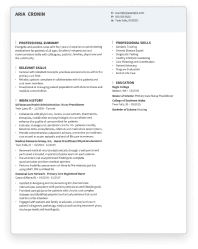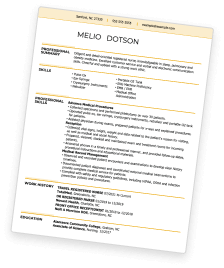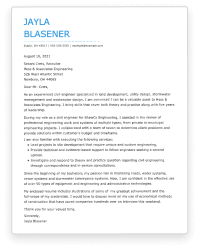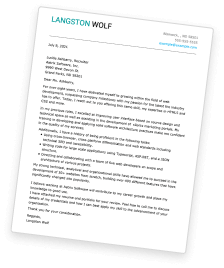Assembler Resumes: Overview
Assemblers play a crucial role in production, reading and deciphering schematics, blueprints, and assembly instructions and using hand tools or machines to assemble parts.
You are also responsible for verifying the correct quantities of parts, checking completed items for quality, and maintaining a safe and clean working environment that complies with regulations.
Production assemblers work in several settings, including:
- Manufacturing Plants
- Automotive Workshops
- Electronics Factories
- Aerospace Industries
- Medical Equipment Production
As an assembler, you have a blend of technical skills, dexterity, attention to detail, and efficiency, and with our examples and templates, you can create a resume that reflects your unique strengths.
Hloom can help you take the first step in advancing your assembler career. Visit our resume builder and professionally designed templates to create a resume that gets attention!
Assembler Resume Example
Check out this example of an assembler resume. It uses a chronological format to highlight your impressive work history and on-the-job experience. Here’s what we like about it:
Professional Design:
This assembler’s resume features a visually appealing, easy-to-read design. Using color helps separate each section, making it easy for hiring managers to find the information they are looking for.
Detailed Work History:
This example of an assembler resume features a well-written work history. Using a chronological format emphasizes the candidate’s many years of experience and assembly expertise.
Persuasive Professional Summary:
This resume begins with a well-crafted professional summary that introduces the candidate’s experience and qualifications in a few brief sentences.
Well-Organized Layout:
Using columns to organize the work history section and balancing the text with white space creates a clean look that will grab the hiring manager’s attention.
Assembler Resume Example
This second example of an assembler resume seamlessly balances visual appeal and well-written content. Here’s what makes it stand out:
Modern Design:
This resume template for an assembler uses blocks of color, columns, and lines to create a clean and contemporary look.
Highlights Skills and Experience:
This assembler resume features a combination format that puts an equal emphasis on the candidate’s skills and experience to convey their qualifications for the job.
Demonstrates Accomplishments:
The candidate uses numbers and percentages to quantify their achievements in previous jobs. For example, “Constructed 100-foot pipe wrangler podium cables with 150% time efficiency,” and “Built over 1,000 company’s products, following blueprints and schematic drawings and specifications.”
Detailed Job History:
This example of an assembler’s resume provides ample space for providing a thorough work history. The candidate uses each bullet point to showcase their most relevant skills and expertise to show their alignment with the role.
How to Write an Assembler Resume
When you are applying for an assembler job, you need a resume that stands out from the crowd and presents your qualifications in the best light. The first step is to create a resume outline and then use it to showcase your assembly qualifications.
Want more advice before you start writing your resume content? Check out our comprehensive guide on how to write a resume for additional insights.
Pick a Format:
The first step is to choose a resume format that best highlights your assembler experience and skills.
If you have professional experience as an assembler, a chronological resume is an excellent choice to emphasize your on-the-job experience.
But what if you are just starting your career as an assembler? In that case, you can use a functional resume format to focus on your relevant skills and qualifications instead of your job history.
Or, a combination resume can make your resume stand out by combining elements of both chronological and functional formats. The combination format balances skills and experience to showcase your ability to do the job.
Contact Information:
It should come as no surprise that you must include your full name, phone number, email address, and location at the top of your resume. You can also include your LinkedIn profile if you have one.
Make sure your information is up-to-date and easy to read so hiring managers can reach you to schedule an interview.
Resume Summary or Objective:
Next, you will craft a compelling summary or objective statement that provides a snapshot of your assembler qualifications and career goals. Tailor this section to the job you are applying to by focusing on the most relevant skills and experiences.
The goal of this section is to introduce yourself in 2-3 brief sentences to grab the reader’s attention and make them want to read more. If you are an experienced assembler, use a professional summary to showcase your work experience.
However, if you are new to assembly work, write an objective statement summarizing your qualifications, career goals, and interest in the job.
Work History:
Now, you will detail your relevant work experience, starting with the most recent position and working backward.
Each job entry should include:
- Job title
- Name of employer
- Location
- Dates of employment
Then, use bullet points to explain your job responsibilities and achievements in each job. Use strong action verbs like assembled, built, installed, and constructed to make this section shine.
Also, include numbers or percentages to demonstrate your impact on each assembler role.
For example, the number of items you assembled per shift or a percentage of improved safety records or efficiency.
Skills:
Next, list your technical skills, including proficiency in assembly tools and machinery to show that you are capable of the responsibilities for the assembler position.
Also include hard skills, such as precision assembly and quality control, and soft skills, like teamwork and adaptability to highlight your balance of abilities.
Focus on skills that are relevant to the job you are applying for, and use keywords from the job description to help your resume pass initial screening by applicant tracking systems and hiring managers.
Education:
Then, add a section for your educational background, including degrees, the name of the school, and location. It is not necessary to include graduation dates unless you are a recent graduate or still in school.
Additional Sections:
Finally, consider adding sections that strengthen your assembler resume, such as certifications, languages spoken, or relevant training.
Additional sections can add a personal touch to your resume and help you stand out from the competition. Just be sure your resume doesn’t look cluttered, and keep the information relevant to the assembler job!
Key Skills For Assembler Resumes
Ready to showcase your assembly skills in the production industry? An assembly job requires technical skills like using special tools and machinery. It also requires soft skills like attention to detail and time management.
Including the right skills on your resume will help you land an interview and get the job!
We’ve compiled the top hard skills and soft skills for an assembler resume to help you get started.
Top 5 Hard Skills for Assembler Resumes
- Precision Assembly: Showcase your ability to assemble products precisely and accurately, ensuring they meet quality standards.
- Quality Control: Conducting quality checks to identify defects and maintain high product standards is essential to an assembly worker’s job.
- Hand Tools: Highlight your expertise using various assembly tools and machinery to demonstrate your mechanical skills.
- Dexterity: The ability to grasp, manipulate and assemble small parts is necessary to succeed as an assembly worker.
- Safety Compliance: Knowledge of safety protocols and experience following guidelines to maintain a secure working environment is a priority for most employers.
Top 5 Soft Skills for Assembler Resumes
- Teamwork: As an assembler, you must work well with your team members to ensure smooth assembly processes.
- Adaptability: Showcase your flexibility to work with diverse products and adapt to changing assembly requirements.
- Attention to Detail: Thoroughness in examining products for defects and ensuring quality is a sought-after skill for assembly line workers.
- Time Management: Employers will be impressed by your ability to meet production deadlines and use time efficiently.
- Problem-Solving: As an assembler, your ability to troubleshoot and address assembly challenges effectively is your key to success.
Top Certifications for Assemblers
Including certifications on your resume shows your dedication to professional development and self-improvement. Here are a few examples of certificates that will make your assembler resume stand out:
- Certified Production Technician (CPT): Earning a CPT certification will validate your skills in manufacturing and production, including assembly proficiency.
- IPC-A-610 Certification: IPC-A-610 certification demonstrates expertise in electronic assembly, a valuable credential in certain assembly roles.
- OSHA Safety Certification: OSHA certification adds credibility to your commitment to safety compliance in the production environment.
- Six Sigma Yellow Belt: A Six Sigma Yellow Belt certification highlights your understanding of quality control and process improvement methodologies.
8 Tips For Writing An Assembler Resume
Tailor Your Resume: Customize your resume for each application, emphasizing your most relevant assembler skills and experiences. Use keywords from the job posting to show your fit for the job and to pass initial screenings by applicant tracker systems.
For example, if the job requirements include experience using specific tools, be sure to mention using those tools in your job history and skills section.
Quantify Achievements: Use numbers to highlight the impact of your assembly efforts, such as meeting production targets, reducing defects, or improving efficiency. For example, “Reduced defects in production by 10%” or “Exceeded production targets by 20 units in the first quarter.”
Highlight Safety Practices: Emphasize your commitment to safety compliance, showcasing your experience maintaining a secure working environment.
Detail Assembly Processes: Use bullets in your work history to provide details about the specific assembly processes you’ve managed to demonstrate a comprehensive understanding of the production workflow.
Use Industry Keywords: Include industry-specific keywords related to assembly and production to enhance your resume’s visibility in applicant tracking systems (ATS). Using keywords from the job description will also highlight your knowledge of the job and genuine interest in the specific position.
Demonstrate Problem-Solving: Use your work history section to detail instances where you’ve identified and resolved assembly challenges, emphasizing your problem-solving skills.
Include Relevant Training: Mention any additional training, workshops or certifications related to assembly, showcasing your commitment to continuous learning and skill development.
Proofread: Avoid typos and grammatical mistakes by thoroughly proofreading your resume. Consider asking someone else to read your resume to check for errors and provide feedback.
Helping Job Seekers Like You


Save Time With Our Resume Builder
Key Takeaways
- Customize your resume for each application, emphasizing relevant skills and experiences.
- Use numbers and percentages to highlight the impact of your assembly efforts, demonstrating your success in previous jobs.
- Provide insights into the specific assembly processes you’ve managed, demonstrating a comprehensive understanding of the production workflow.
- Incorporate industry-specific keywords related to assembly and production to enhance your resume’s visibility in applicant tracking systems (ATS).
- Use a visually appealing resume design that is well-organized and easy to read.
More Resume Examples
Save Time With Our Cover Letter Builder












